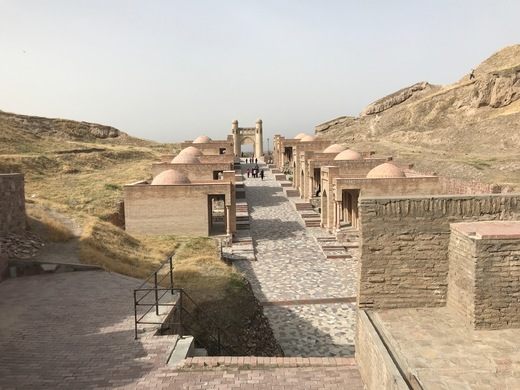Hisor Fort is conveniently located along the Khanaka River, in Hisor Valley. The building has gone through different reconstructions, renovations, and additions. Historical records point at a fort in Hisor as far back as 1000 BC. More recent records of the fort relate to the time when Cyrus the Great founded the first Persian Empire (around 550 BC).

Not much of the original fort has passed the test of time, unfortunately. Dating the current fort is not a straightforward task, as different buildings were added at different times. Inside the fortress, recently, a wedding ceremony building was erected. The oldest surviving part of Hisor Fort is the arched gate, which is probably from around the year 500.
Chasmai Mohiyon Mosque was built in 700, the same period of time when the construction of Sangin Mosque (Stone Mosque) also started, but this wasn’t completed until almost 1,000 years later. A salient feature of Sangin Mosque is the four bottomless jugs placed within the walls of the dome to improve the acoustics of the hall.
The 1500s mark the building of several components of the fort, namely the wall where the main gate is located, the Old Madrassa, the Makhdumi A’zam Mausoleum, and some additions to the Old Mosque. One of the latest additions next to the fort is a caravanserai from 1808, a place for Silk Road traders and their camels to safely spend the night. Only the lower part of the caravanserai remains, as the top layer was taken by the Soviets to build a theater in Dushanbe.
Most of the structures have been renovated. The Old Madrassa houses a museum with items from Tajikistan’s rural past and Soviet memorabilia. Also, old horse stables can be found on the other side of the road.






